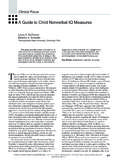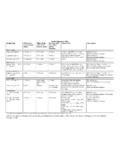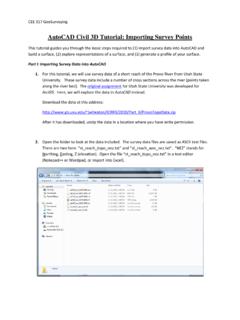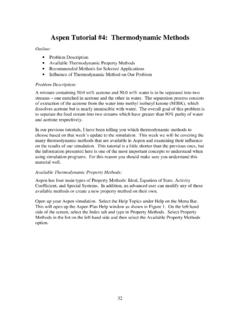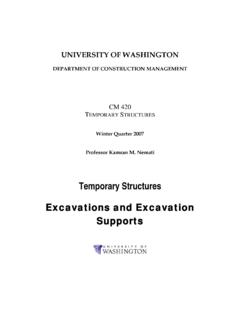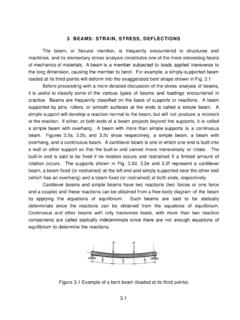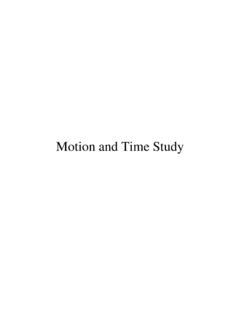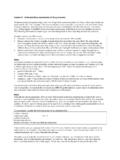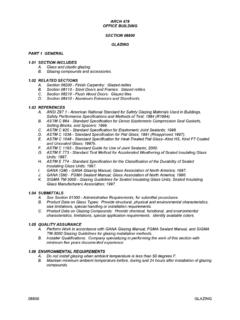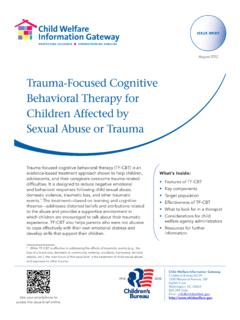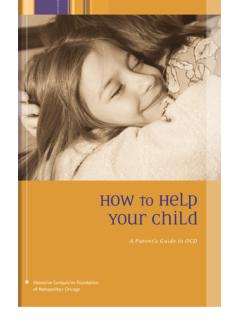Transcription of A Guide to Child Nonverbal IQ Measures - University of …
1 DeThorne & Schaefer: Nonverbal IQ275 American Journal of Speech-Language Pathology Vol. 13 275 290 November 2004 American Speech-Language-Hearing Association1058-0360/04/1304-0275 Clinical FocusLaura S. DeThorneBarbara A. SchaeferPennsylvania State University , University ParkA Guide to Child Nonverbal IQ MeasuresThis Guide provides a basic overview of 16child Nonverbal IQ Measures and uses a set ofspecified criteria to evaluate them in terms oftheir psychometric properties. In doing so, thegoal is neither to validate nor to criticize currentuses of IQ but to (a) familiarize clinicians andinvestigators with the variety of Nonverbal IQmeasures currently available, (b) highlight someof the important distinctions among them, and(c) provide recommendations for the selectionand interpretation of Nonverbal IQ Words: assessment, cognition, languageThe use of IQ scores has become relatively common-place within the clinical and research practices ofspeech-language pathology.
2 From a clinical stand-point, speech-language pathologists in the public schoolsare often encouraged to consider IQ when making deci-sions regarding treatment eligibility (Casby, 1992;Whitmire, 2000). From a research perspective, IQ measuresare often administered to define the population of interest, asin the case of specific language impairment (Plante, 1998;Stark & Tallal, 1981). One distinction across IQ measuresthat appears particularly relevant to the field of speech-language pathology is whether the measure of interest isconsidered verbal or Nonverbal in nature. Nonverbalintelligence tests were designed to measure general cogni-tion without the confound of language ability.
3 The majorimpetus for the development of Nonverbal IQ measuresappeared to come from the military during World WarI. As summarized in McCallum, Bracken, and Wasserman(2001), the military used group-administered IQ Measures toplace incoming recruits and consequently needed a means toassess individuals that either were illiterate or demonstratedlimited English proficiency. Once Nonverbal assessmenttools were developed, their use expanded to include addi-tional populations, such as individuals with hearing loss,neurological damage, psychiatric conditions, learningdisabilities, and speech-language impairments. Because thepractice of speech-language pathology centers on suchspecial populations, the present article focuses exclusivelyon Measures of Nonverbal distinction between verbal and Nonverbal IQ wasnot originally based on empirically driven theory; rather,Wechsler s original IQ scales differentiated verbal fromperformance ( Nonverbal ) primarily for practical reasons(McGrew & Flanagan, 1998, p.)
4 25). Subsequent theoristshave applied factor analytic methods to a variety ofcognitive Measures to derive empirically based models ofintelligence. For example, Carroll (1993) conducted factoranalyses of 477 data sets to develop his three-stratumtheory of intelligence. Stratum III includes a general factor,often referred to as g, which is thought to contribute invarying degrees to all intellectual activities. The secondstratum contains 8 broad abilities, such as fluid intelligenceor visual perception. These broad abilities are then furtherdivided into 70 narrow cognitive abilities that contribute toStratum I. McGrew and Flanagan (1998) have integrated thethree-stratum theory with the theory of fluid and crystallizedintelligences, associated with Horn and Cattell (1966), tocreate the Cattell Horn Carroll theory of cognitive abilities(McCallum, 2003, p.
5 64). Based on this theory, McGrewand Flanagan (1998) have suggested that verbal IQrepresents the construct of crystallized intelligence but that Nonverbal IQ is not a valid construct in and of itself: There is no such thing as Nonverbal ability onlyabilities that are expressed nonverbally (p. 25).Although questions regarding the nature of intelligenceand how it is best measured are beyond the scope of thisarticle, the Cattell Horn Carroll theory of cognitiveabilities (McGrew & Flanagan, 1998) is offered as atheoretical framework within which to speculate about thenature of individual IQ Measures . Previous published workhas provided thorough discussion of the psychometricproperties and general issues related to standardizedassessment ( , McCauley, 2001; McCauley & Swisher,1984a, 1984b).
6 The present review intends to expand onsuch work by applying the information to specific nonver-bal IQ Measures and by including a discussion of howindividual tests may relate to broad cognitive abilities. Thespecific aims of the present article are to (a) familiarizeclinicians and investigators with the variety of nonverbalIQ Measures currently available, (b) highlight some of the276 American Journal of Speech-Language Pathology Vol. 13 275 290 November 2004important distinctions among them, and (c) providerecommendations for the selection and interpretation ofnonverbal IQ undertook a review of all mainstream IQ measurescurrently on the market and selected for this review thosethat met five specific criteria.
7 First, each measure had to bemarketed or commonly used as a measure of generalcognitive functioning . Second, each included measure hadto provide a standardized score of Nonverbal ability. Bynonverbal, we mean that the tests rely heavily on visuo-spatial skills and do not require examinees to provideverbal responses. Some IQ Measures , such as the CognitiveAssessment System (CAS; Naglieri & Das, 1997) and theWoodcock Johnson Tests of Cognitive Abilities III(Woodcock, McGrew, & Mather, 2001), include nonverbalcomponents but do not organize them into a composite orscaled score. Such Measures were not included given thatinterpretation at the subscale level is generally not adviseddue to psychometric concerns (McDermott & Glutting,1997).
8 Third, in addition to providing a Nonverbal measure ofgeneral cognitive functioning , each included IQ measurewas required to be relatively recent, meaning each wasdeveloped or revised within the last 15 years. One excep-tion was made in the case of the Columbia Mental MaturityScale Third Edition (CMMS 3; Burgemeister, Hollander,& Lorge, 1972). Although this measure was published over30 years ago, it was included here given its frequent usewithin the field of speech-language pathology. The fourthcriterion for test inclusion was suitability of the measurefor preschool or school-age children. Although a numberof the included Measures can be administered well intoadulthood, IQ Measures that focused exclusively on adultswere omitted.
9 Fifth, each measure had to be developed forthe population at large as opposed to specific groups, suchas individuals with visual impairment or deafness. Table 1contains a list of 16 IQ Measures that met all five specifiedcriteria. The remainder of the article is devoted to (a)elaborating on the test information presented in Table 1,(b) providing an evaluation of each test s psychometricproperties, and (c) offering recommendations for theselection and interpretation of Nonverbal IQ InformationAge RangeColumn 1 lists the ages at which normative data werecollected for the test as a whole or for the nonverbalsection specifically if it differed from the SubscoreColumn 2 in Table 1 denotes whether each measureprovides a verbal subscore in addition to the nonverbalcomponents.
10 Although the focus of the present article is onthe Nonverbal components of each measure, we thought itmight be useful for readers to know whether the same testprovided a verbal subscore as well. Many verbal subscoresare composed of subtests that are analogous to languagemeasures. For example, the Wechsler Intelligence Scale forChildren Fourth Edition (WISC IV; Wechsler, 2003)includes a Similarities subtest that requires children toexplain how two items are alike, and the DifferentialAbility Scales (DAS; C. D. Elliott, 1990a) include aNaming Vocabulary subtest that requires children to nameobjects/pictures. To the extent they reflect languageabilities specifically, verbal subscores may help validateand/or identify language concerns in particular subscores can be derived from 5 of the 16 measureslisted in Table 1.
